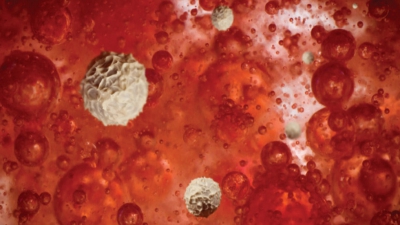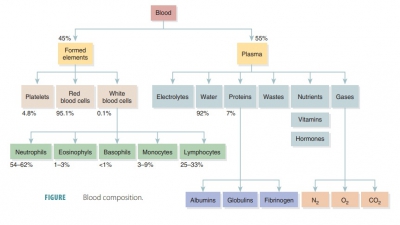Blood Functions
| Home | | Anatomy and Physiology | | Anatomy and Physiology Health Education (APHE) |Chapter: Anatomy and Physiology for Health Professionals: Blood
Various components of the blood function are distribution, regulation, and protection. These functions are further described as follows:
Blood
Functions
Various components of the blood function are distri-bution,
regulation, and protection. These functions are further described as follows:
■■ Distribution:
Delivery of oxygen from the lungs,delivery of nutrients from the
gastrointestinal tract to all cells in the body, transport of hormones from
endocrine organs to target organs, and transport of metabolic waste products
from cells to various elimination sites; these include the kidneys, for
disposal of nitrogenous wastes in the urine, and the lungs, for the elimination
of carbon dioxide.
■■ Regulation:
Maintenance of proper fluid volume in the circulatory system; proteins in the
blood prevent excessive fluid loss from the bloodstream into tissue spaces;
therefore, fluid volume remains in the blood vessels, supporting efficient
blood circulation throughout the body; maintenance of body temperature by
absorption and distribution of body heat, as well as to the skin surfaces for
heat loss; maintenance of normal pH in body tissues, with proteins and other
bloodborne solutes becoming buffers, preventing serious changes inblood pH; the
blood is also a reservoir for bicar-bonate ions, which are the body’s alkaline reserve.
■■ Protection:
Prevention
of infection, via the actionsof antibodies, complement proteins, and WBCs; this
protects the body against bacteria, viruses, and other foreign agents;
prevention of blood loss via the actions of platelets and plasma proteins,
which begin clot formation and slow or stop blood loss.


